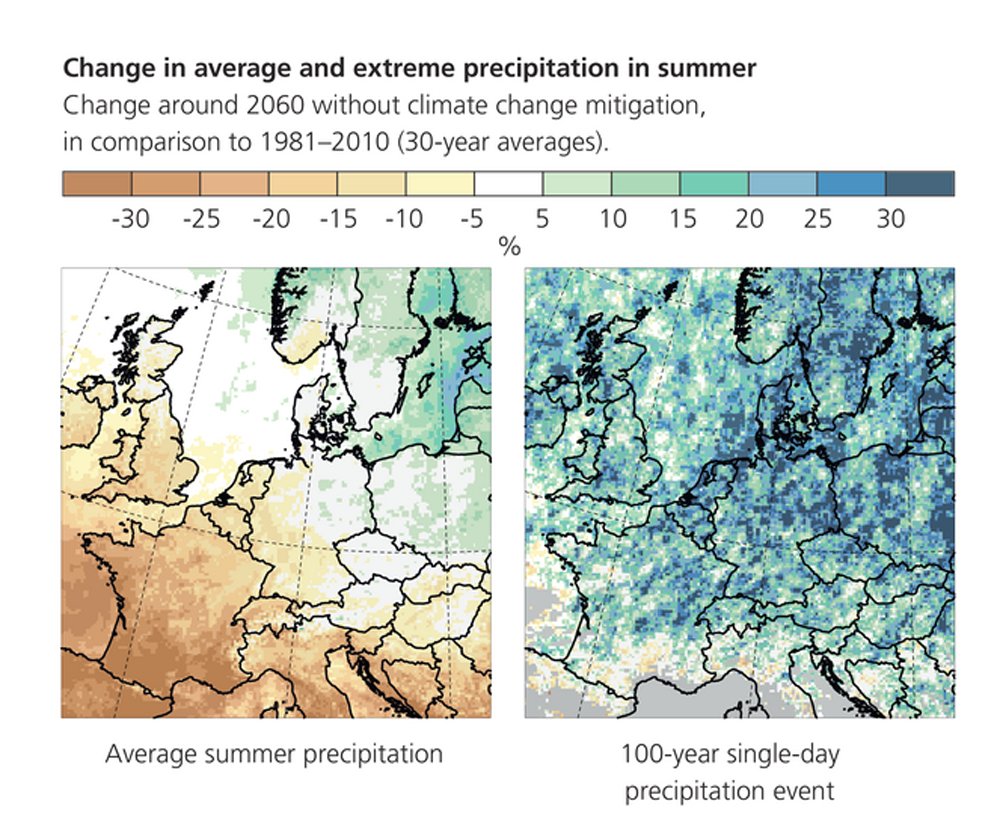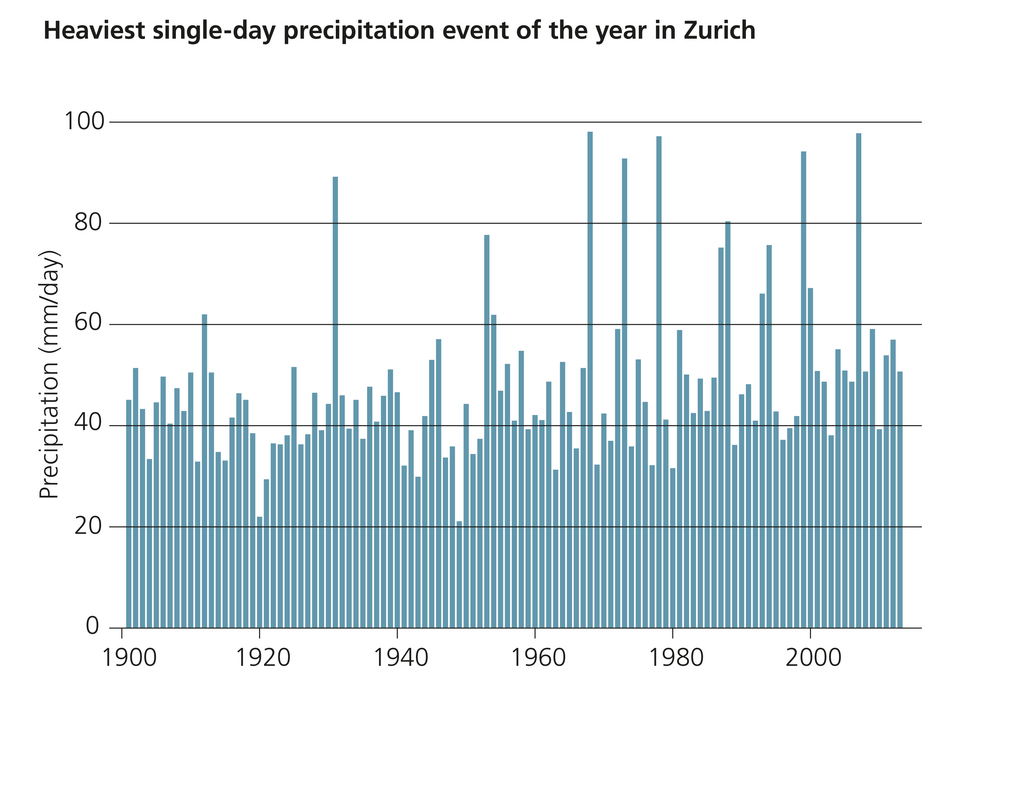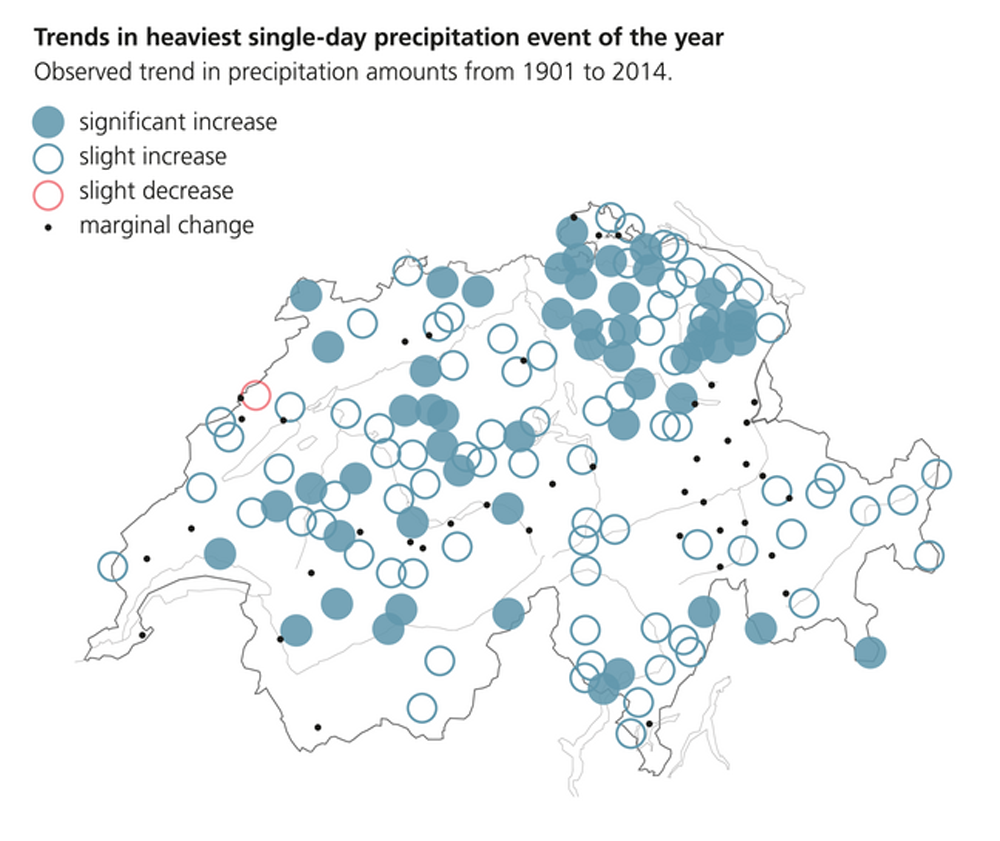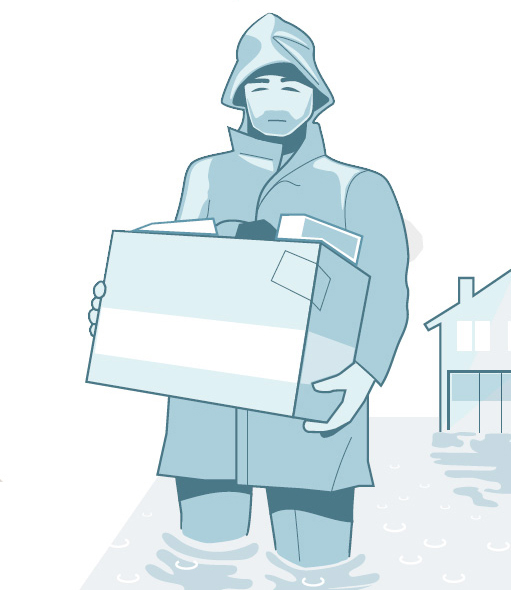Heavy precipitation events are likely to become significantly more frequent and intense in the future compared to today. This is the case for all seasons, but particularly for winter. Rare extreme events such as 100-year precipitation events will be markedly more intense.
|
Heaviest single-day precipitation event of the year | 100-year single-day precipitation event | ||
|---|---|---|---|---|
Winter |
Summer |
Winter |
Summer |
|
Expected around mid-century |
+10 % |
+10 % |
+10 % |
+20 % |
Expected by the end of the century |
+20 % |
+10 % |
+20 % |
+20 % |
The heaviest precipitation falling on a single day has increased by about 10 percent. A 100-year precipitation event in summer will bring about 20 percent more rain than today.
Since 1901, the amount of precipitation falling in individual heavy precipitation events in Switzerland has risen by 12 percent. Because warmer air can hold about 6 to 7 percent more water per degree Celsius, the physics of the observed intensification of precipitation is well understood.
This trend is expected to continue in the future. In the case of unchecked climate change, the heaviest single-day precipitation events in winter would intensify by an additional 10 percent by the middle of this century; by the end of the century, the expected increase is 20 percent. In summer, the increase is about 10 percent. In the other seasons, the changes are between those for winter and summer.
The very rare precipitation events that occur once every 100 years will see increases as well. The change amounts to about 10 to 20 percent by mid-century, and about 20 percent by the end of the century. Thus, despite reductions in total amounts of precipitation in summer, the intensity of extreme events will increase.
However, the changes in heavy precipitation events vary over time and across regions and may deviate from the long-term trend over several decades.
The increased intensity of heavy precipitation events can have significant cost implications. For instance, heavy precipitation can cause landslides and flooding and thus result in widespread damage. Consequently, infrastructure such as flood protection and sewage networks must be properly designed to cope with these threats.
The potential for damage by precipitation extremes is expected to be higher in the future, and not only because of the higher amounts of precipitation. The increasing altitude of the snowline will increase the proportion of liquid precipitation in winter, thereby expediting runoff.
The key messages can also be found in the CH2018 brochure, which is available in printed form or as an electronic download.
Last modification 14.10.2022









